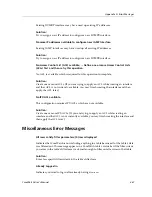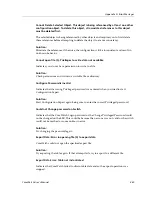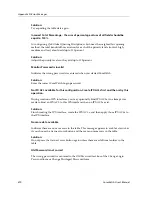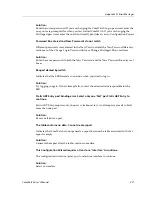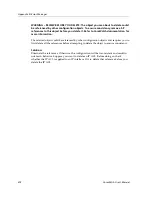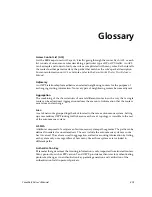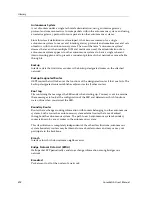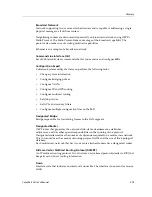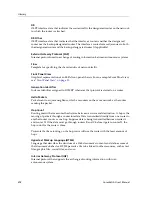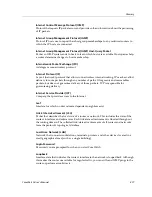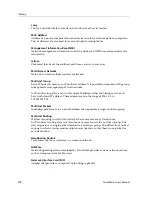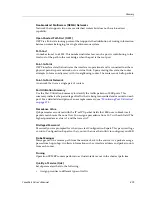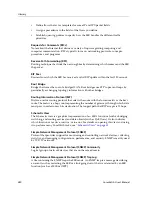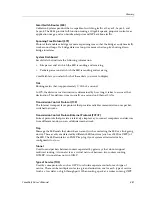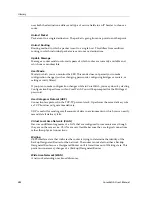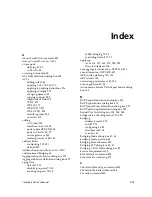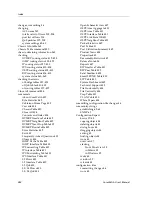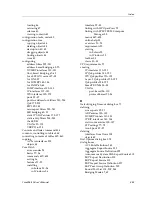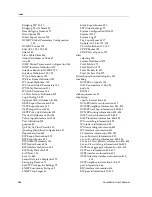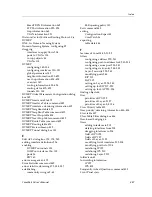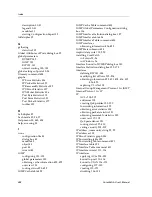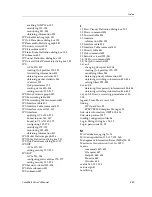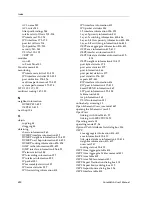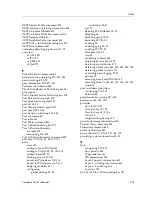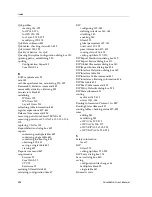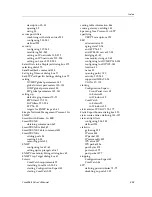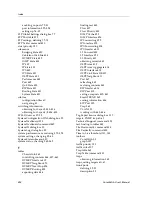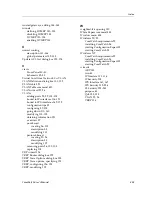
CoreWatch User’s Manual
481
Glossary
SmartSwitch Router (SSR)
Cabletron Systems product that is capable of switching traffic at Layer-2, Layer-3, and
Layer-4. The SSRs provide full-function routing at Gigabit speeds, pinpoint control over
application usage, and can handle enterprise and ISP backbone traffic.
Spanning Tree Protocol (STP)
Protocol that enables a bridge to create a spanning tree so that the bridge can dynamically
work around loops. If a bridge detects a loop, it removes that loop by shutting down
bridge interfaces.
System Dashboard
Set of dials that indicate the following information:
•
Bits per second at which the SSR is sending and receiving
•
Packets per second at which the SSR is sending and receiving
CoreWatch lets you select which of these dials you want to display.
Tick
Routing metric that is approximately 1/18th of a second.
In IPX, the distance to a destination is determined by how long it takes to arrive at that
destination. This delivery time is usually one second on Ethernet LANs.
Transmission Control Protocol (TCP)
The Internet transport layer protocol that provides reliable communication over packet-
switched networks.
Transmission Control Protocol/Internet Protocol (TCP/IP)
Suite of protocols that provide a relatively simple way to connect computers and devices
from different vendors on a worldwide internetwork.
Trap
Message the SSR sends that describes an event (such as restarting the SSR or a link going
down). These events are detected by different SSR functions (such as a MIB or OSPF) of
the SSR. The SSR maintains an SNMP trap log if your system administrator has
configured it to do so.
Tunnel
Used to send packets between routers separated by gateways that do not support
multicast routing. A tunnel acts as a virtual network between two routers running
DVMRP. A tunnel does not run IGMP.
Type of Service (TOS)
Used by some protocols, such as OSPF, to calculate separate routes for each type of
service. There can be multiple routes to a given destination, one for each type of service
(such as, low delay or high throughput). When routing a packet, a router running OSPF
Summary of Contents for CoreWatch
Page 1: ...CoreWatch User s Manual 9032564 04...
Page 2: ...Notice 2 CoreWatch User s Manual...
Page 20: ...Preface 20 CoreWatch User s Manual...
Page 64: ...Chapter 5 Changing System Settings 64 CoreWatch User s Manual...
Page 86: ...Chapter 6 Configuring SSR Bridging 86 CoreWatch User s Manual...
Page 106: ...Chapter 7 Configuring VLANs on the SSR 106 CoreWatch User s Manual...
Page 206: ...Chapter 12 Configuring QoS on the SSR 206 CoreWatch User s Manual...
Page 246: ...Chapter 13 Configuring Security on the SSR 246 CoreWatch User s Manual...
Page 363: ...CoreWatch User s Manual 363 Chapter 16 Configuring Routing Policies on the SSR 9 Click OK...
Page 364: ...Chapter 16 Configuring Routing Policies on the SSR 364 CoreWatch User s Manual...
Page 370: ...Chapter 17 Checking System Status 370 CoreWatch User s Manual...
Page 390: ...Chapter 18 Monitoring Real Time Performance 390 CoreWatch User s Manual...
Page 396: ...Chapter 19 Checking the Status of Bridge Tables 396 CoreWatch User s Manual...
Page 430: ...Chapter 20 Checking the Status of Routing Tables 430 CoreWatch User s Manual...
Page 442: ...Chapter 22 Obtaining Reports 442 CoreWatch User s Manual...
Page 456: ...Appendix B CoreWatch Menus 456 CoreWatch User s Manual...

